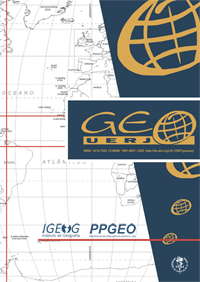THE FOOTBALL WORLD CUP OF 1950 AND ITS INSERTION IN THE PRODUCTION OF BRAZILIAN URBAN SPACE
DOI:
https://doi.org/10.12957/geouerj.2013.11490Keywords:
football – stadia – urbanization – Brazil – 1950 World CupAbstract
DOI: http://dx.doi.org/10.12957/geouerj.2013.11490
The spatiality of the World Cup of 1950 reflects the stage of evolution of the Brazilian urban network back then, still showing coastal concentration and the hegemony of the two national metropolises, with emphasis in Rio de Janeiro. In regards of the intra-urban scale, which matters the most in this work, this sport mega-event produced a low impact in our stadiums. We can argue that not only in that historical context the realization of a World Cup could aggregate a much smaller volume of material investment, but above everything, that in the Brazilian soccer there already were in course a consistent process of popularization. This process was reflected in the constant amplification of already existing stadiums and in the growing involvement of state power in the production of the spectacle.
Downloads
Downloads
Published
How to Cite
Issue
Section
License
The copyright of articles published in Geo UERJ belongs to their respective authors with rights to first publication conceded to the journal. Every time that the article is cited and reproduced in institutional repositories or personal and professional web pages the link to the journal web page must be provided Geo UERJ.

The articles are simultaneously licensed under theCreative Commons Atribuição-Não Comercial-Compartilha Igual 4.0 Internacional.


